What is the analysis of water from the well
Even from the school bench, each of us knows that a person is 75 percent water, so the influence of life-giving moisture on our body is difficult to overestimate. And to control its quality, water analysis is necessary.
However, it should immediately be said that this procedure is rather troublesome, therefore, we will further consider how and where to analyze water from a well.

General information
In many ways, the quality of water is affected by where it comes from. In the upper aquifer, located above the first waterproof layer, ground water flows, which contain a large amount of impurities. This water is unsuitable for drinking, it is not even recommended for technical use..
Rocks are known to be arranged in layers, as a result of which alternating impermeable and permeable layers occur. Between the water-resistant layers are aquifers, which are called inter-layer waters. In most cases, this water is suitable for drinking and has a very stable chemical composition.
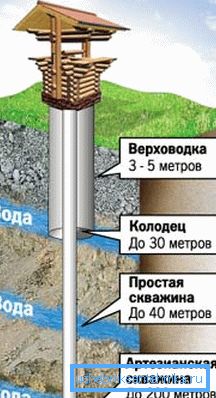
As a rule, wells dig up to the first interstratal horizon. At the same time, the depth of its occurrence can be very different and it is almost impossible to predict it. Exact results will be known only after drilling, however, you can first ask the neighbors who have wells in their sections.
In some cases, the water is in the horizons under pressure and can rise to a significant height or even clog a fountain above the soil surface. Such horizons are called artesian or pressure.
If the aquifer is located at a depth of more than 10 - 15 meters, then it is not advisable to dig a well, in this case a well is a much more efficient solution.
It should be noted that the wells are divided into two types:
- "Wells on sand" - their depth is within 15 - 35 meters;
- "Limestone wells" - the depth can be up to 200 meters or more.
Since at the depth of the latter pressure water is often found, such wells are also called artesian.

Why do analysis
Even if your country house is in an ecologically clean area, you cannot be sure that the water in the well can be used as drinking water. Therefore, it is necessary to perform a water quality analysis from the well.
Note! Categorically you can not use water, whose composition is unknown. It is not even recommended to use such liquid for household purposes. If it is too hard, then scale will remain on household appliances, which can lead to their breaking down.
Water analysis involves the study of its physicochemical and microbiological properties.
In the framework of chemical studies determine the content:
- Manganese
- Gland;
- Ammonium;
- Sulphates;
- Bicarbonates, as well as other substances.
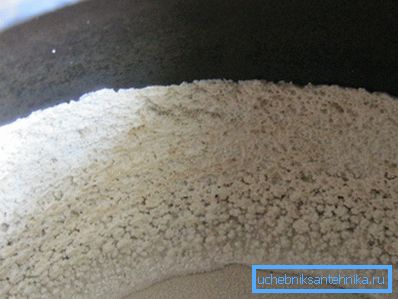
In addition, it is measured:
- Turbidity,
- PH;
- Rigidity;
- Alkalinity.
Be sure to identify deviations from the norm in smell and color, with the establishment of their causes.
The presence of some organic elements is also detected, such as:
- Vinyl chloride;
- Dioxin.
As well as some inorganic substances
- Mercury;
- Lead;
- Copper;
- Cadmium.
In addition, the content is determined:
- Herbicides;
- Pesticides;
- Insecticides with their derivatives.
Another important point of the analysis is the testing of water for radionuclides:
- Alpha particles
- Radium, etc.
Water from shallow wells should be studied especially carefully, as it may contain large amounts of slags. With regard to bacteriological analysis, it will show the total number of bacteria, as well as the presence of Escherichia coli, cholera, typhoid or dysentery.
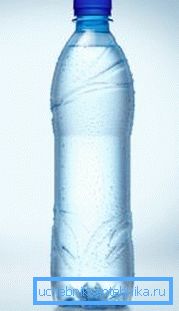
How to make a selection of water for analysis
When can I take water for research?
First of all, it should be said that it does not make any sense to analyze water from a well immediately after its drilling. For the result to be as objective as possible, the well must be intensively exploited (not as intended) for several weeks. Only after this, all the remaining elements after the well device will be washed out, including the cementing and flushing solution, as well as the rock of the upper layers of soil, pump lubrication, etc.
In addition, prior to sampling, it is necessary to perform bacteriological treatment of the well using sodium hypochlorite solution. The treatment is carried out for 12 hours, after which the water is pumped out for two days.
Tip! It is advisable to perform water analysis twice - several weeks after the installation of the well, and also after the installation of filtration systems.
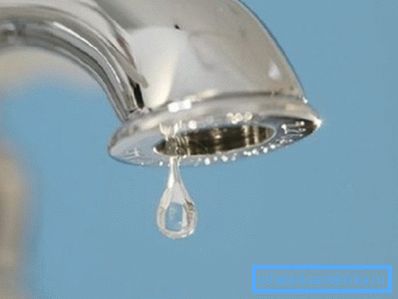
How to make a selection of water for chemical research
Water should be collected in a glass or plastic container with a volume of 2-4 liters. Be sure to pay attention to the fact that the container was clean and without foreign odors. Therefore, it is impossible to use beer bottles as a container, as well as dishes from under sweet water or technical liquids. In addition, the container can not be washed with detergents.
Tip! It is best to purchase a bottle of non-carbonated mineral water for sampling water and print it just before sampling.
Otherwise, the analysis will turn out to be of poor quality, respectively, the money will be spent in vain, and the cost of analyzing the water from the well is quite high. Since it is necessary to perform two analyzes - chemical and bacteriological, you need to take two samples.
Selection instructions are as follows:
- Water needs to be drained for 20-30 minutes, it will allow to get water from a well, and not a hydroaccumulator.
- Then the container and the lid should be rinsed with water, which is taken on the sample, then dial it "under the neck" and close tightly.
- To make the results as objective as possible, the bottle should be filled with a thin stream along the side of the container in order not to stimulate any reactions.
- Water after collection must be delivered to the laboratory for two to three hours. The faster the analysis will be performed, the more reliable will be its results. In addition, we should not forget that when water interacts with air and sunlight, chemical reactions take place in it, as a result of which its chemical composition changes. Therefore, filled containers must be transported in a tight bag.
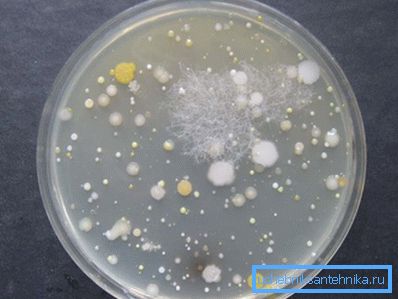
Selection for microbiological examination
The main task of bacterial water analysis is to provide information on the number and composition of bacteria. Therefore, when selecting, it is necessary to minimize the ingress of third-party bacteria into the liquid.
Perform this operation carefully and quickly. Containers in this case must be sterile. It is best to purchase a container in the same laboratory in which the analysis will be performed.
Even if the well is no longer new and has been previously treated with an antibacterial composition, this procedure still needs to be repeated before sampling. Immediately before sampling, the water should be lowered for 15-20 minutes. In this case, the tap or mixer must first be treated with medical alcohol or burned.
Tip! It is advisable to take water with medical gloves, without touching the neck.

Where to do the analysis
Water can be attributed for analysis to the SES or a private laboratory. It should be said that the price of services in private laboratories, as a rule, is much higher. However, they allow you to perform the analysis in accordance with all the wishes of the customer, for example, you can find out the content of any individual component.
Conclusion
As we found out, before using water, it is necessary to obtain complete information about its quality, otherwise it can lead to serious diseases. It should be borne in mind, if you want to get a truly objective analysis of water from a well, you should do it properly with your own hands, according to all the rules described above.
Additional information on this topic can be obtained from the video in this article.